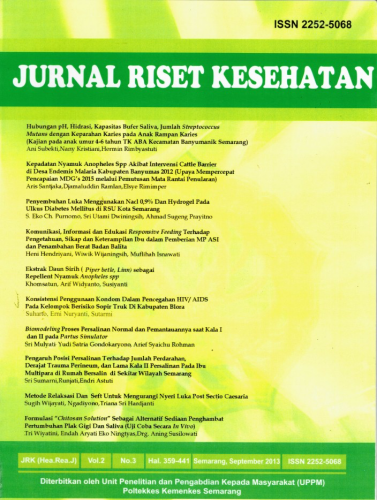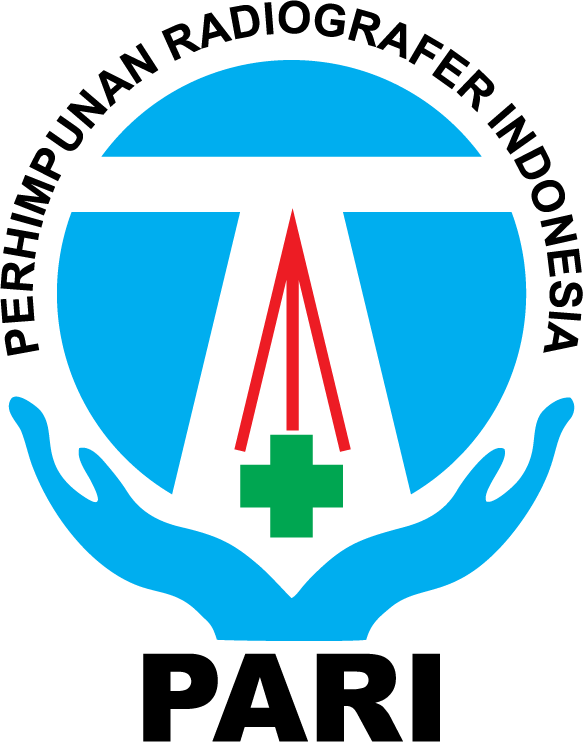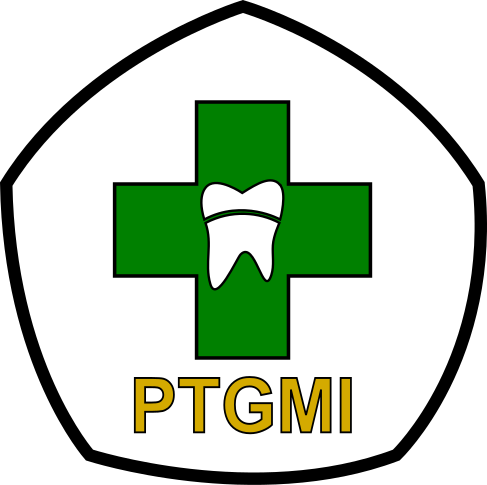Effectiveness Of E-Booklet Education In Improving Knowledge And Prevention Behavior Toward Preeclampsia Among Pregnant Women
Abstract
Preeclampsia is a dangerous condition for pregnant mothers that causes significant health problems worldwide. It is characterized by high blood pressure, with readings greater than 140/90 mmHg, occurring after 20 weeks of pregnancy. However, in reality, many pregnant mothers still do not know the methods to prevent preeclampsia. Studies show that the knowledge possessed by pregnant mothers influences their behavior; therefore, mothers with a lack of knowledge tend not to engage in preeclampsia prevention. This research aims to determine the relationship between the level of knowledge of pregnant mothers about preeclampsia and their behavior in preventing preeclampsia in the Padangsari Health Center work area. This study uses a quantitative method with a descriptive correlational design and a cross-sectional approach. The research was conducted in the Padangsari Health Center work area, Semarang City. The sample size consisted of 55 respondents, selected using a non-probability sampling technique, namely purposive sampling. Data analysis was performed using the Chi-Square test. The research instrument was a questionnaire measuring the level of knowledge about preeclampsia and preeclampsia prevention behavior, developed by the researcher and tested for validity and reliability. The results indicate a significant relationship between the level of knowledge and preeclampsia prevention behavior. The statistical test using the Chi-Square test yielded a significance value (sig-p = 0.000) < α (0.05), so Ho is rejected and Ha is accepted.
Keywords
References
Dong, Y., Wu, S. X., Wang, W., & Peng, S. (2019). Is the Student-Centered Learning Style More Effective Than the Teacher-Student Double-Centered Learning Style in Improving Reading Performance? Frontiers in Psychology, 10(November). https://doi.org/10.3389/fpsyg.2019.02630
Erisa, Y., & Yuri, W. (2023). Pengaruh Tingkat Pendidikan Dan Pengetahuan Terhadap Kejadian Preeklampsia. Medical Jurnal of Al-Qodiri, 8(1), 70–74. https://doi.org/10.52264/jurnal_stikesalqodiri.v8i1.237
Eller, L. ., Lev, E. ., & Feurer, A. (2015). Key components of the effective mentoring relationship. Nurse Educ Today, 27(3), 320–331. https://doi.org/10.1016/j.nedt.2013.07.020.Key
Harun, H., Herliani, Y. K., & Setyawati, A. (2019). Pengetahuan, Sikap Dan Kesiapan Mahasiswa Program Profesi Ners Dalam Penerapan Evidence Based Practice. Jurnal Perawat Indonesia, 3(2), 117. https://doi.org/10.32584/jpi.v3i2.309
Karo, M. B. (2020). Perilaku Hidup Bersih dan Sehat (PHBS) Strategi Pencegahan Penyebaran Virus Covid-19. Jurnal Keperawatan Komunitas, 01(01), 40–47. Retrieved from W Saputro, LY Budiarti, H Herawati - Dunia Keperawatan, 2016 - ppjp.unlam.ac.id
Kurniawati, N. (2022). Hubungan Dukungan Suami Dengan Perilaku Pencegahan Preeklamsia Pada Ibu Hamil Di Desa Glundengan Puskesmas Wuluhan Kabupaten Jember. 114. http://repository.unmuhjember.ac.id/14358/
Lai, T. H. T., Tang, E. W. H., Fung, K. S. C., & Li, K. K. W. (2020). Reply to “Does hand hygiene reduce SARS-CoV-2 transmission?” Graefe’s Archive for Clinical and Experimental Ophthalmology. https://doi.org/https://doi.org/10.1007/s00417-020-04653-4
Massachusetts Medical Society. (2020). Aerosol and Surface Stability of SARS-CoV-2 as Compared with SARS-CoV-. The New England Journal of Medicine, 382(16).
Medika Iis, A. I., Candra, D. D., Indriayani, I., Octavia, L., Candra Dewi, D., & Susanti, F. (2023). Hubungan Pengetahuan Ibu Hamil Tentang Preeklampsia Terhadap Pencegahan Preeklampsia. Jurnal ‘Aisyiyah Medika, 8, 61–69. https://doi.org/10.36729/jam.v8i1
Nasir, N. M., Baequni, B., & Nurmansyah, M. I. (2020). Misinformation Related To Covid-19 in Indonesia. Jurnal Administrasi Kesehatan Indonesia, 8(2), 51. https://doi.org/10.20473/jaki.v8i2.2020.51-59
Notoatmodjo, S. (2018). Promosi Kesehatan & Ilmu Perilaku. In Jakarta: Rineka Cipta.
Novyanti, B. M., Kristina, T. N., & Sudarmiati, S. (2022). Pengetahuan Ibu Hamil tentang Preeklampsia di Nusa Tenggara Barat. Holistic Nursing and Health Science, 5(2), 238–245. https://doi.org/10.14710/hnhs.5.2.2022.94-101
Parantika, R. W., Hardianto, G., Miftahussurur, M., & Anis, W. (2021). Relationship Between Obesity, Twin-Pregnancy and Previous History of Preeclampsia With Preeclampsia. Indonesian Midwifery and Health Sciences Journal, 5(3), 307–316. https://doi.org/10.20473/imhsj.v5i3.2021.307-316
Ramis, M. A., Chang, A., & Nissen, L. (2018). Undergraduate Health Students' Intention to Use Evidence-Based Practice After Graduation: A Systematic Review of Predictive Modeling Studies. Worldviews on Evidence-Based Nursing, 15(2), 140–148. https://doi.org/10.1111/wvn.12268
Usnaini, S., Nurmayanti, I., & Mustika, N. (2020). Hubungan Pengetahuan Dengan Perilaku Pencegahan Preeklampsia Pada Ibu Hamil. Midwifery Journal of STIKes Insan Cendekia Medika Jombang, 12(1), 61–69. http://digilib.stikesicme-jbg.ac.id/ojs/index.php/jib/article/view/208
DOI: https://doi.org/10.31983/jrk.v14i1.12469
Article Metrics
Refbacks
- There are currently no refbacks.
Copyright (c) 2025 Jurnal Riset Kesehatan




















































